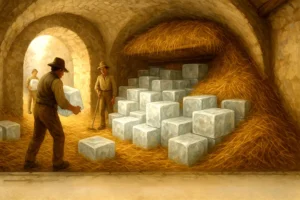1. Introduction
Starbucks Corporation is the world’s largest coffeehouse chain, known for premium coffee, customer experience, and brand loyalty. Founded in 1971 in Seattle, it has grown into a global coffee empire with over 37,000 stores across 80+ countries. This case study explores Starbucks’ history, business model, marketing strategies, challenges, and future direction.
2. History and Evolution of Starbucks
2.1 Early Years (1971–1986)
- 1971: Founded by Gordon Bowker, Jerry Baldwin, and Zev Siegl in Seattle’s Pike Place Market.
- Focused on selling high-quality coffee beans and equipment, inspired by Peet’s Coffee.
- Howard Schultz joined in 1982 as Director of Marketing, introducing the Italian coffeehouse concept.
- 1986: Schultz left to start his own café, Il Giornale.
2.2 Expansion into a Coffeehouse Chain (1987–2000)
- 1987: Schultz acquired Starbucks for $3.8 million and rebranded his stores under the Starbucks name.
- 1989: 46 stores across the U.S., annual revenue hit $50 million.
- 1992: Starbucks went public (IPO) on NASDAQ, raising $271 million.
- 1996: Entered Japan, Starbucks’ first international market.
- 2000: 3,500+ stores worldwide, Schultz stepped down as CEO.
2.3 Global Domination and Digital Revolution (2001–2016)
- 2003: Acquired Seattle’s Best Coffee and Teavana to expand product offerings.
- 2008: Financial crisis led to 600 store closures. Schultz returned as CEO.
- 2009: Introduced the Starbucks Rewards program, boosting customer loyalty.
- 2011: Starbucks acquired Evolution Fresh, entering the health & wellness space.
- 2015: Launched Mobile Order & Pay, strengthening digital integration.
- 2016: Entered China aggressively, becoming the fastest-growing market.
2.4 Reinventing Coffee Culture (2017–2025)
- 2018: Kevin Johnson became CEO, focusing on technology, sustainability, and expansion.
- 2020: Shifted to drive-thru, delivery, and AI-powered personalization during the pandemic.
- 2021–2023:
- Expansion into plant-based drinks and sustainability initiatives.
- Opened Starbucks Reserve Roasteries in New York, Tokyo, Milan, and Chicago.
- Partnered with Nestlé for at-home coffee products.
- 2025 Goal: Achieve 50,000 stores globally with 100% carbon-neutral operations.
3. Starbucks Business Model and Strategy
3.1 Product Strategy
A. Core Offerings
- Coffee Beverages: Espresso, Frappuccino, cold brew, seasonal drinks.
- Food Items: Pastries, sandwiches, protein boxes.
- Packaged Goods: Starbucks VIA, whole beans, K-Cups.
- Retail Merchandise: Mugs, tumblers, coffee-making accessories.
B. Premium Experiences
- Starbucks Reserve: High-end coffee blends, special brewing methods.
- Teavana: Premium tea products.
- Starbucks Odyssey (2022): NFT-powered loyalty program.
3.2 Pricing Strategy
- Premium Pricing: Starbucks charges 20–30% more than competitors.
- Value-Based Pricing: Customers pay for the brand experience, ambiance, and customization.
- Dynamic Pricing: Prices vary by location and customer demand.
3.3 Marketing and Branding Strategy
A. Emotional Branding & Storytelling
- “Third Place” Experience: Starbucks positioned itself as a social hub, not just a coffee shop.
- Sustainability Story: 99% ethically sourced coffee, fair trade practices.
B. Digital & Social Media Marketing
- Starbucks Rewards: 31M+ members globally, contributing 50% of U.S. sales.
- Mobile App Integration: AI-powered recommendations, digital payments.
- Instagram & TikTok: Viral seasonal drinks like Pumpkin Spice Latte.
C. Customization & Personalization
- Starbucks allows over 170,000 drink combinations.
- AI-driven Deep Brew analyzes customer preferences for personalized offers.
3.4 Distribution Strategy
- Company-Owned Stores: 85% of locations are directly operated by Starbucks.
- Franchising (Licensed Stores): In malls, airports, and supermarkets.
- Retail & E-Commerce: Starbucks-branded coffee sold via Nestlé partnership.
- Delivery Expansion: Partnerships with Uber Eats & DoorDash.
4. Financial Performance
4.1 Revenue Trends (2010–2023)
- 2010 Revenue: $10.7 billion
- 2015 Revenue: $19.1 billion
- 2020 Revenue: $23.5 billion (COVID-19 impact)
- 2023 Revenue: $35.4 billion
4.2 Market Share
- Global coffee market share: 40%.
- Leading competitor: Dunkin’, McDonald’s McCafé, Costa Coffee.
5. Challenges and Risks
5.1 Competition
- Increasing competition from Dunkin’, McDonald’s McCafé, Tim Hortons, and local artisanal coffee shops.
- Rise of independent specialty coffee brands.
5.2 Pricing & Economic Pressures
- Starbucks is often criticized for high prices compared to competitors.
- Economic downturns affect consumer spending on premium coffee.
5.3 Sustainability & Ethical Concerns
- Paper cup waste: 7 billion cups used annually, sustainability efforts questioned.
- Fair wages & labor disputes: Starbucks faced unionization efforts in 2022.
5.4 Digital Transformation Risks
- Cybersecurity concerns with mobile payments.
- Dependency on AI & data analytics, raising privacy concerns.
6. Future Outlook (2025 and Beyond)
6.1 Future Strategies
- AI & Automation: Expansion of Deep Brew AI for predictive ordering.
- Sustainability Goals:
- Reusable cup initiatives across all stores.
- Reduce carbon emissions by 50% by 2030.
- Store Expansion:
- Plan to reach 50,000+ locations by 2030.
- China as the largest market outside the U.S.
6.2 Key Takeaways
- Customer Loyalty Leader: Starbucks Rewards program sets the industry standard.
- Tech & Innovation Driven: AI-powered operations improve efficiency.
Sustainability Challenge: Starbucks must balance growth with environmental responsibility.
Top 10 Packaging Mistakes That Are Costing Your Business Money










